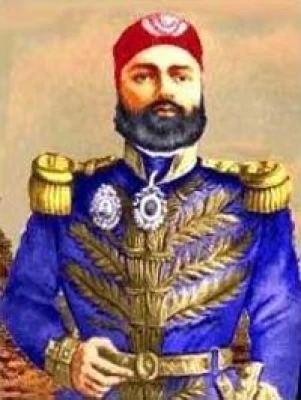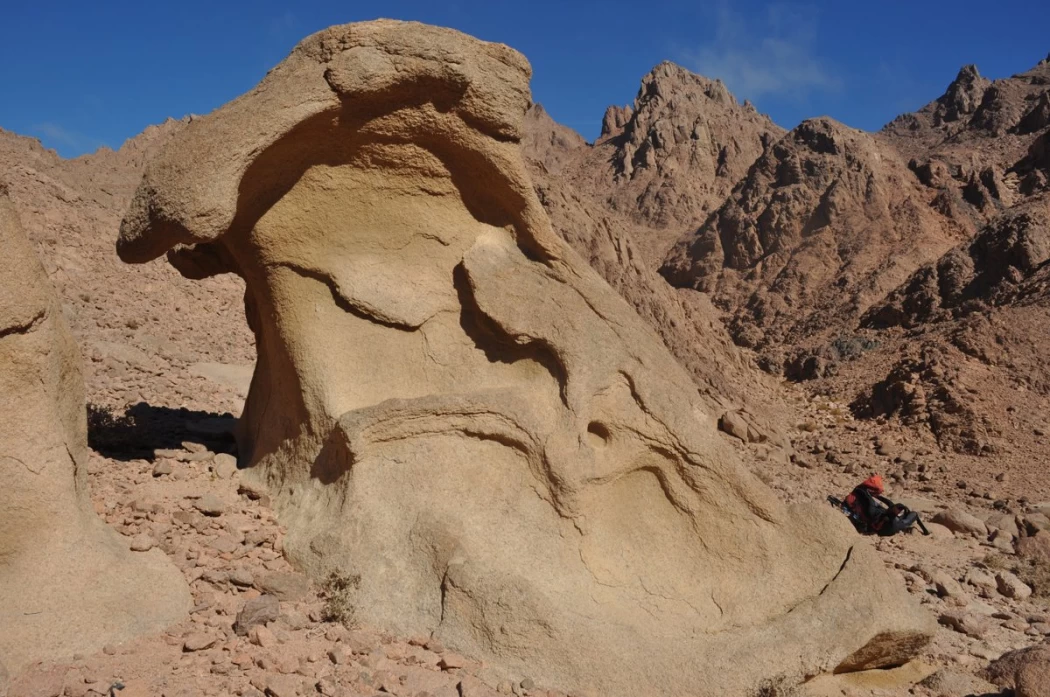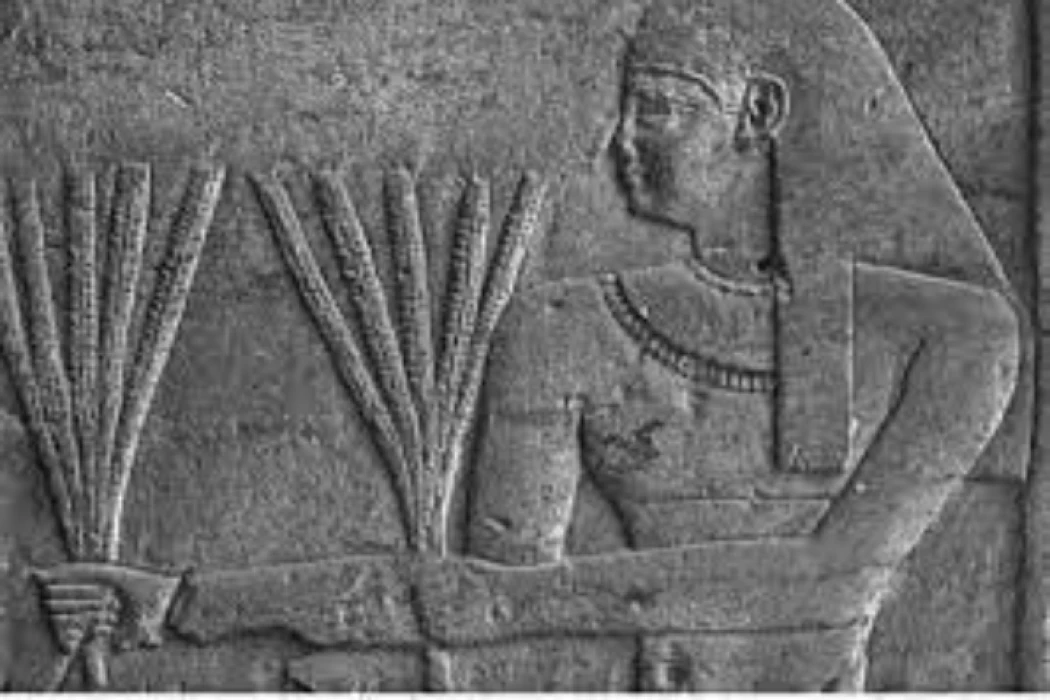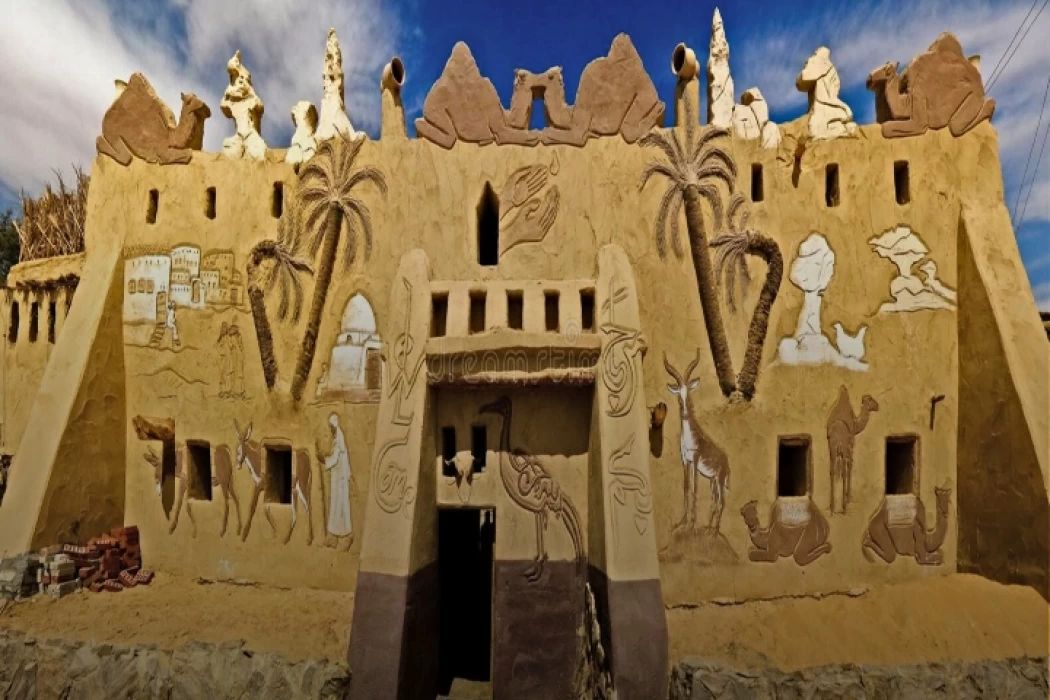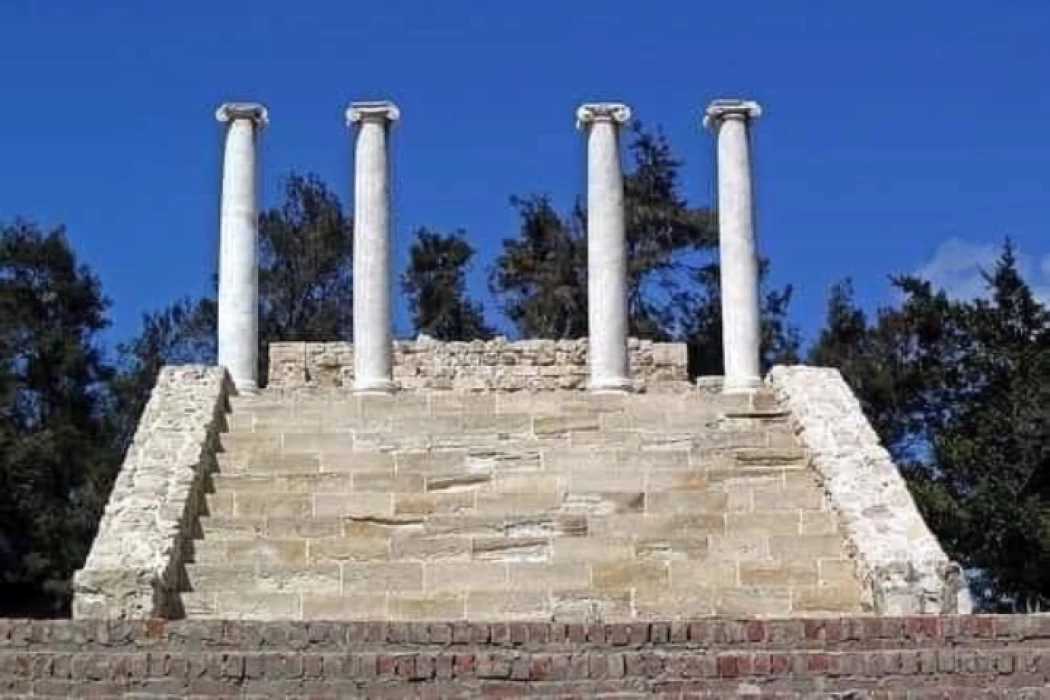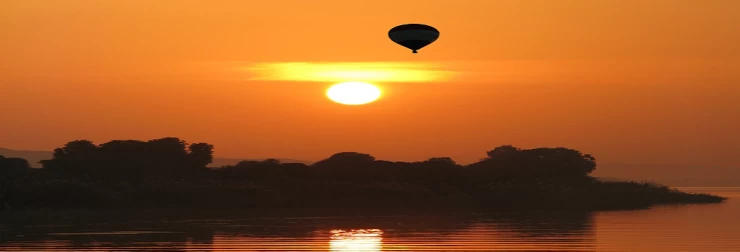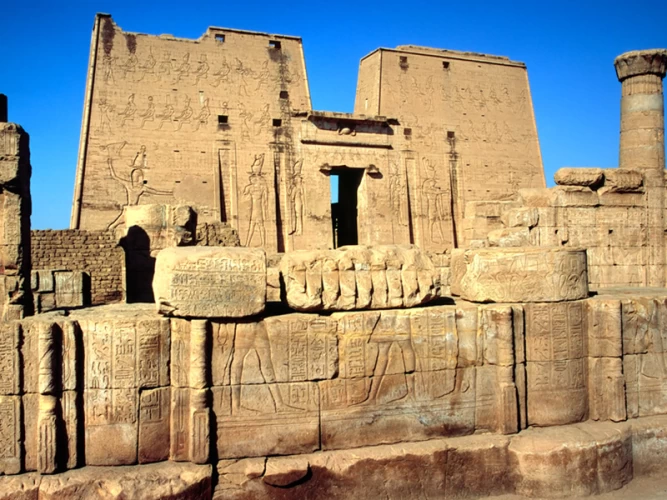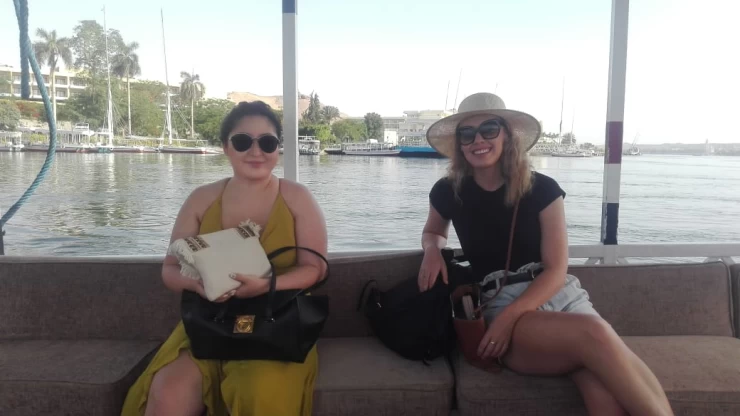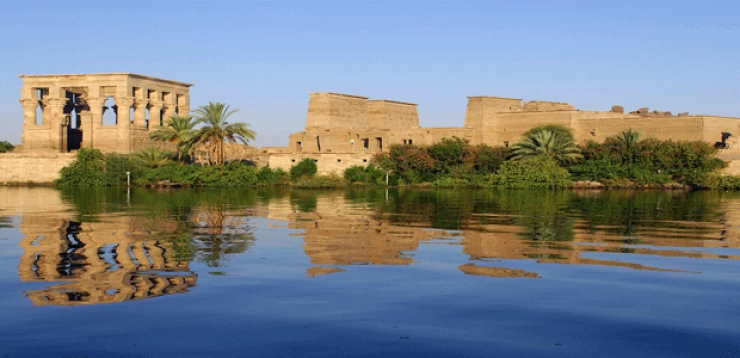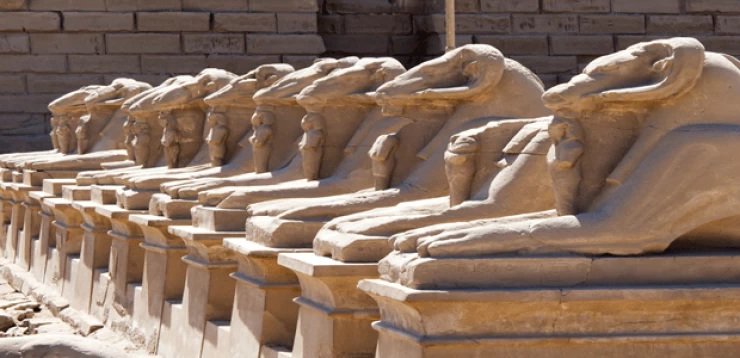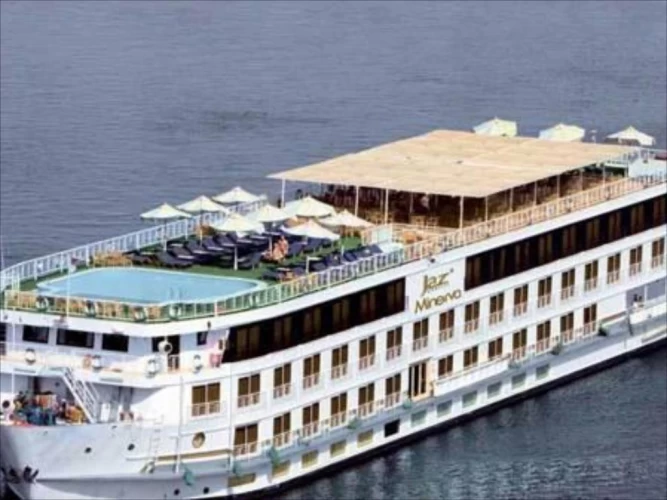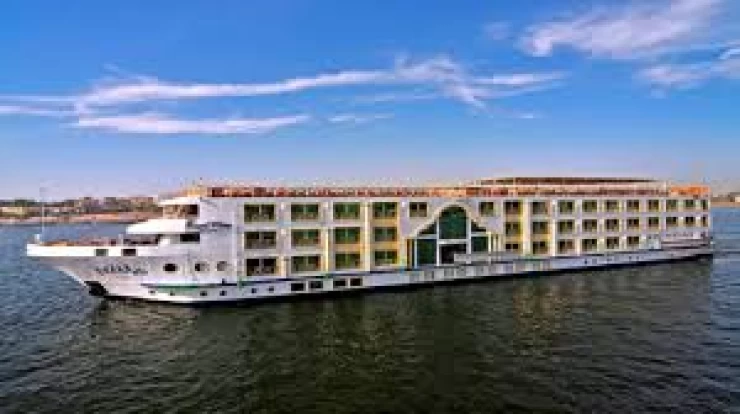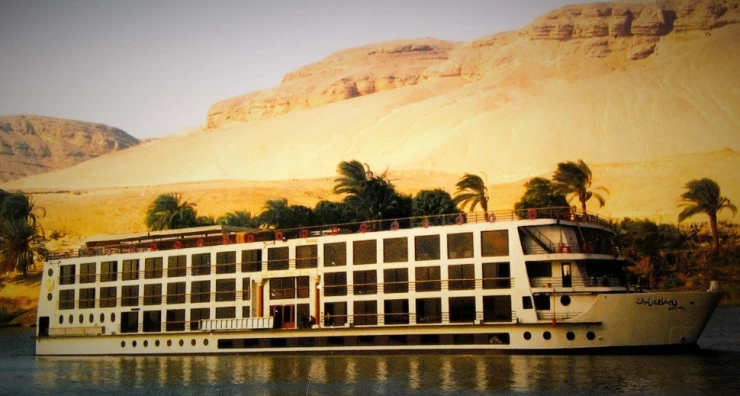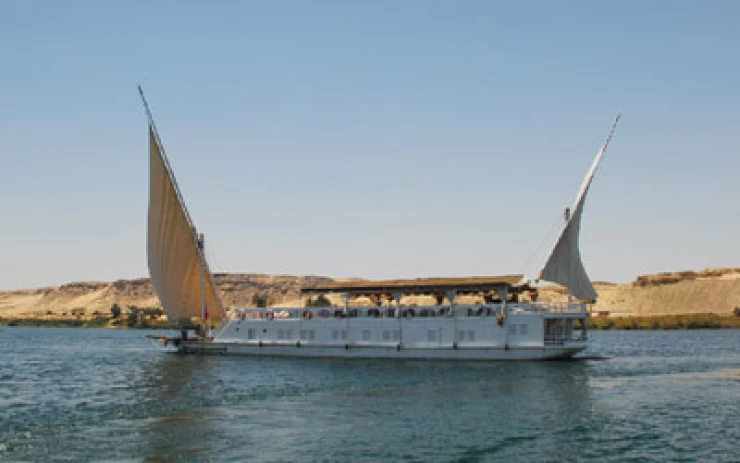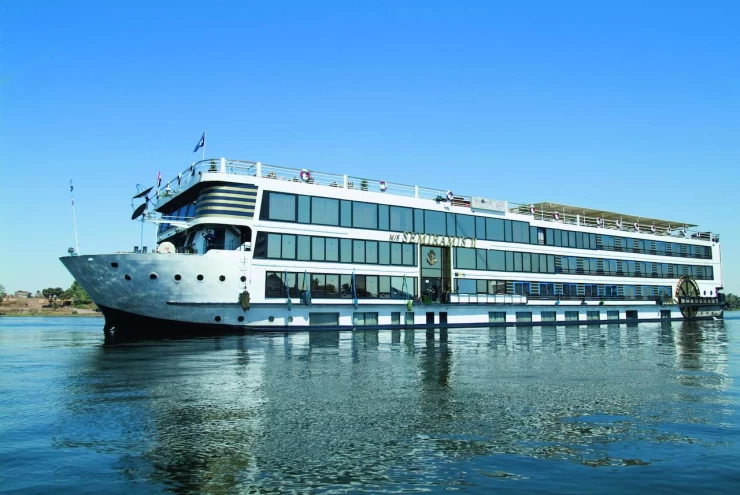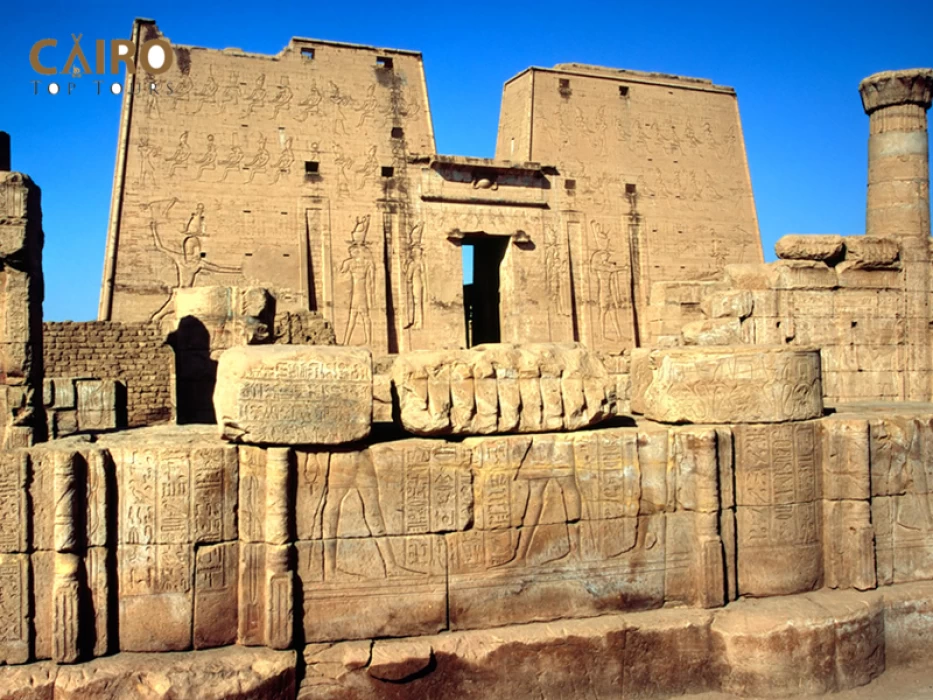
Kom Ombo Temple
The temple of Kom Ombo was established during the reign of Ptolemy VI philometor, but its decoration was carried out only in the Roman era at the time of Emperor Tiberius and we also see in this temple the same characteristics that we find in other Ptolemaic Egyptian temples in terms of design, architecture and decoration, however, this temple has a special feature that resulted from the local worship in the place, where people worshiped two local gods, Sobek and therefore, there are not only two adjacent shrines in this temple, but also on the axis of each of these two shrines Doors next to each other, in the outer wall and in the walls of the two halls of the columns and beyond, and accordingly the temple is divided into two sections, each of which is dedicated to the worship of one of these two deities.
The walls of this temple are decorated with a deep Egyptian ornament, characterized by its precision of workmanship, good harmony and the beauty of the balance between the characters of its landscapes and the surrounding hieroglyphic inscriptions that complement these views.
As for the capitals of the columns in the temple, they are different, and this was common in the Ptolemaic era, and all of them are known by this era, especially those known as the heads of Hathor, Palm heads, Lotus heads and papyrus heads, which are deeply Egyptian heads whose Egyptian style was never doubted at all. The most widespread in the Ptolemaic era are the capitals of the composite columns, in which some unduly and unreasonably see a trace of the capitals of the Corinthian columns. As for us, we believe that it is a true Egyptian, the fruit of the artistic renaissance that flourished during the Safavid era-that is, in the seventh and sixth centuries BC-and was aimed at reviving the Ancient Traditions, which brought out many verses of Egyptian art. The proof of this is that we know that the columns of the papyrus and the Lotus are due in their origin to the primitive lists, on which the ceiling was carried and their heads were decorated with flowers, but since the artist in the Sawa period naturally surpassed the artist of the ancient state in the advancement of feeling paper, he did not return to those primitive lists, but took the nucleus of his column from the flourishing papyrus column (Campaniform) with an open head, and decorated as his ancestors did before with a bouquet of flowers. However, he chose flowers of several types instead of one, such as Lotus or Papyrus, as the artists of the Old Kingdom did.
The many complex types of these new heads cannot have been developed in a short time, but they must have been the result of a long natural evolution, but it is difficult and even impossible to trace the roles of this evolution now due to the demolition of the temples of the Sawa period (660-525 BC). The appearance of the complete types of these heads in the thirtieth dynasty in the temple of nektanpo II, that is, in the middle of the fourth century BC, leads us to believe that the history of these heads must date back to an era earlier than the thirtieth dynasty. If we take into account all the different considerations, we find that the Sawa era is the most suitable time for this because of the renaissance of art and the peace and prosperity that prevailed in it. If these heads were in the role of composition during the seventh and sixth centuries BC, that is, long before the appearance of the Corinthian column, and if we recall the origin of Egyptian columns decorated with flowers, and if we know that the elements that make up the new heads are purely Egyptian, it becomes clear to us the invalidity of the claim that sees in the new heads a trace of the Greek Corinthian column. And if there is a relationship between the two, then the opposite is closer to the right, because the Egyptian was decorating the capitals of his columns with flowers before the era of the Greeks with columns, and the lateral rings (Volutes) in the Corinthian capitals bear a great resemblance to the drooping ends of the iris flower leaves, which was the symbol of Upper Egypt, and used in decoration.
It is located next to this temple. A crocodile museum with mummified crocodiles from the days of the Pharaohs.They were found in tombs and temples, and inscriptions were also found on the temple of Kom Ombo with the image of a cup used to draw blood from the body.. It is what is known today as cupping and the pharaohs used it for treatment.They used to draw blood from the body with metal cups, and these cups were found in the catacombs and monuments of the ancient Egyptians, and they were usually made of Sheep horns with a hole drilled at the pointed end.. Through it, the blood was drawn out of the body, and then they used glass cups, from which they emptied the air by burning cotton inside the cup.
Latest Articles
Admin
Regin of Abbas I of Egypt | Abbas Pasha I
Abbas has been often described as a mere voluptuary, but Nubar Pasha spoke of him as a true gentleman of the "old school". He was seen as reactionary, morose and taciturn, and spent nearly all his time in his palace. He undid, as far as lay in his power, the works of his grandfather, both good and bad.
Admin
Story of Gabal Shayeb Al Banat - Red Sea Mountain
Jabal shayb al-banat is one of the Red Sea Mountains in the eastern desert in Egypt, located to the west of the city of Hurghada at a latitude of 27 degrees north and a longitude of 33.5 degrees east of the Greenwich line approximately, this mountain is the highest mountain peak in the eastern desert with a height of up to 2185 meters, it is a prominent mass of igneous rocks
Admin
Neper God Of Grain
Neper was the deity of grains, particularly cereals that were important in Ancient Egypt, such as wheat and barley. It was stated that he foretold when the crops would grow, be harvested, and disappear.
Admin
Badr Museum in Farafra
The Badr Museum is located in a mud building, which is the common home found in this medieval part of Egypt. All of the artwork that was created by the artist is quite unique. His work almost always depicts life in the Farafra Oasis and he provides the work through both painting and sculpting.
Admin
The Black Head Temple
The Black Head Temple is a small temple dedicated to the worship of the goddess Isis and was discovered in 1936, by chance, in the Black Head area, which is now located within the Mandara area of the Montazah district in Alexandria. This temple was moved from its original place to the Latin Necropolis in 1994.
Admin
The Queen Tetisheri
Tetisheri was the mother of Seqenenre Tao, Queen Ahhotep I, and possibly Kamose. For sure, she was the mother of Satdjehuty/Satibu, as attested on the rishi coffin of the latter. At Abydos, her grandson King Ahmose I erected a Stela of Queen Tetisheri to announce the construction of a pyramid and a "house" for Tetisheri.
